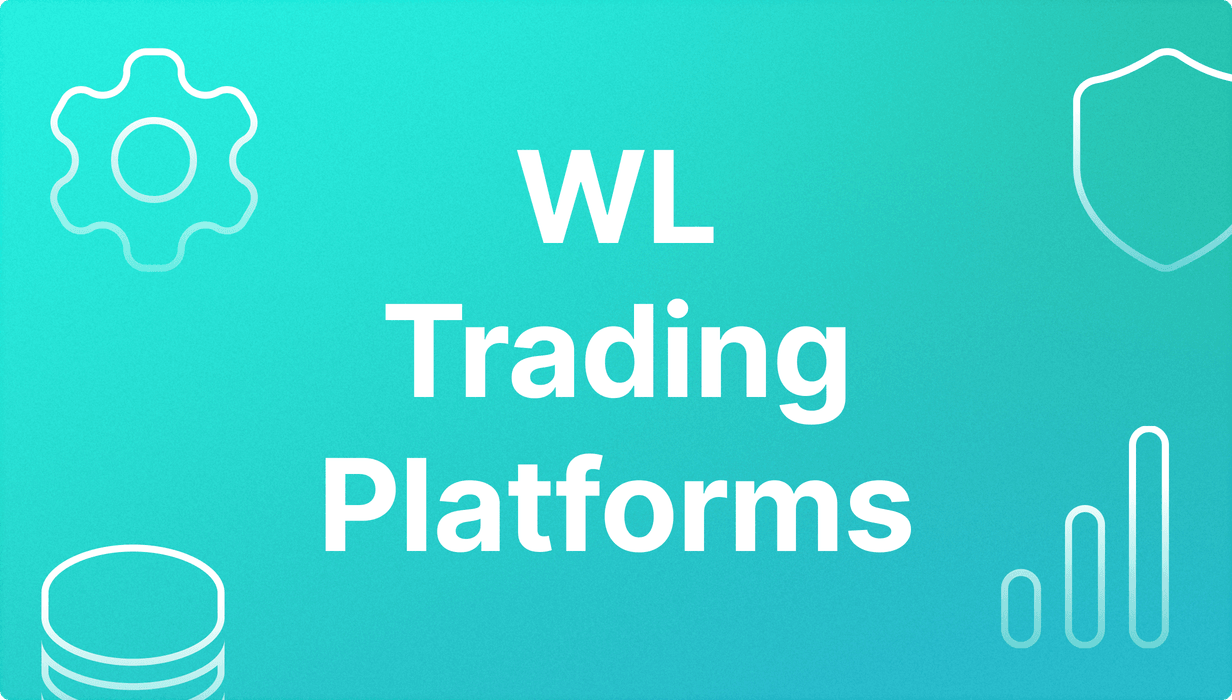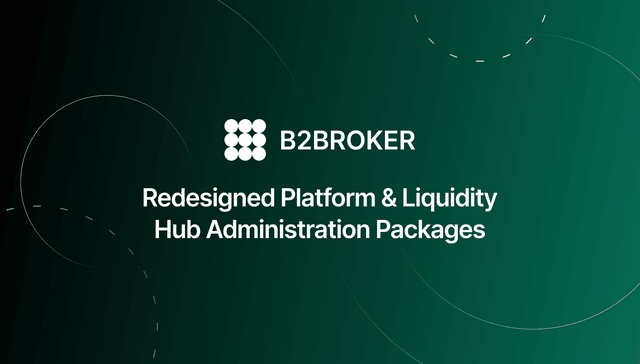Pros & Cons of Using a White-Label Trading Platform as a Broker

Launching a business in the financial industry usually requires a lot of research, development, testing, resources, and, most importantly, time.
As the competition in financial markets intensifies and opportunities come and go pretty quickly, brokers need faster methods to enter the market. Here is where white-label platforms come into play.
White-label trading platforms are pre-designed software that can be modified according to unique business needs, saving time and money. Let’s review how this method works and what challenges you might face.
Key Takeaways
White-label solutions are pre-built platforms that can be rebranded and customised to serve specific business requirements.
Turnkey solutions are more cost-effective and faster to integrate for brokerage firms.
White-label brokers integrate advanced tech features, regulatory compliance protocols, and unique branding capabilities.
Some challenges of using WL solutions include licensing fees, user data privacy, and control levels.
Understanding White-Label Trading Platforms
White-labels are pre-built platforms that providers develop as ready-to-use solutions. They are directly sold to businesses or go through resellers.
They can be rebranded or customised to meet the unique requirements of businesses, exchanges, prop firms, and brokerage platforms and are easier to deploy.
Instead of developing native software from scratch, brokers can leverage these turnkey solutions to offer trading services under their own brand.

White-label platforms typically include core financial features, such as multi-asset trading, risk management tools, liquidity solutions, and back-office support. However, they can be adjusted again to align with the services and products promised by the franchisee.
For financial brokers, adopting an FX white-label platform means reduced time-to-market, cost savings, and access to a proven trading infrastructure. Additionally, providers take care of installation and maintenance, ensuring reliability and security while allowing brokers to focus on client acquisition and retention.
However, they come with numerous challenges, such as recurring fees, limited control, and dependency on the provider. Additionally, regulatory compliance remains critical, as brokers must adhere to financial regulations in their operational jurisdictions.
Besides white-labels, there are grey and private labels. Grey labels allow partial customisation with some branding flexibility, while private labels offer exclusive, fully customised products under one brand, offering the most control.
Pros of White-Label Trading Software
White-labelling carries multiple benefits to existing brokerages looking to expand to more markets and new firms lacking advanced technical skills and capital. The low first-hand development required with pre-built platforms makes them more accessible, enabling startups to earn a competitive edge.

Faster Launch
One of the biggest advantages of white-label trading software is the speed of deployment. Since the technology is already developed and tested, brokers can launch their trading business within weeks rather than months or years.
This approach reduces the barriers to entry, allowing brokers to capitalise on existing opportunities and start generating revenue quickly.
Have a Question About Your Brokerage Setup?
Our team is here to guide you — whether you're starting out or expanding.
Cost Efficient
Compared to in-house platform development, white-labels require much less financial commitment. Building trading software using internal teams requires significant investment in software development, infrastructure, security, and compliance.
Additionally, finding and hiring full-stack developers and highly qualified IT professionals is highly costly, and the entire project may take one year from initiation to deployment.
However, turnkey solutions decrease this resource consumption. You can buy a suitable pre-developed platform, customise it to your requirements, integrate the features and services you need, and deploy your trading software within a few weeks.
These advantages come at a fraction of the cost. You only need to pay a licensing fee and ongoing service charges, which are often more affordable and personalised compared to building from scratch.
Reliable Performance
WL platforms are developed and maintained by experienced tech providers who create tens of such software for brokers, hedge firms, exchanges, and other financial institutions.
As such, they are more empowered to ensure system stability and performance, enabling it to handle high trading volumes, prevent downtime, and offer seamless order execution.
Additionally, WL technology providers usually integrate major trading services, including multi-asset coverage, liquidity aggregation, seamless order management, and reliable payment systems.
Most brokers prefer this approach, where they can find all related services in one place rather than adding them from different vendors.
Advanced Security
Turnkey trading platforms come with a bunch of security measures, such as encrypted transactions, double-factor authentication, and advanced fraud detection systems.
You can rely on these security measures or add yours. However, reputable providers are well-educated about cyber threats and protecting their platforms from hacks and data breaches, which can secure your and your client’s data.
Higher Flexibility
White-label trading platforms are highly customisable and flexible, allowing you to modify features in a plug-and-play style more effortlessly.
WL software providers can configure the trading platform, server, and connections according to your business requirements, ensuring optimum trading performance and that you pay for the services you need.
Regulatory Compliance
Complying with regulatory frameworks and financial laws is a critical aspect of operating a brokerage, and a turnkey solution provider can integrate features that help you adhere to these regulations more seamlessly.
These may include Anti-Money Laundering (AML) and Know Your Customer (KYC) solutions, trade reporting tools, data security protocols, and other protocols that ensure legal business operations.

Unique Branding
White-label platforms allow you to personalise the trading software with your branding characteristics, including logos, themes, colours, and domain names. This solidifies your online presence and ensures a seamless brand identity that builds trust and recognition among traders.
Frequent Updates & Maintenance
Regulated white-label providers frequently update their platforms to ensure high performance and optimum performance, aligning with technology breakthroughs and changing industry standards.
These updates may include operational improvements, security patches, and new trading features. Moreover, most of these services are led by specialised technicians, minimising the burden of in-house technical support and maintenance.
Providers help monitor system performance using real-time dashboards and indicators to track and prevent downtime and cyber threats. This ensures brokers can focus on expanding their business while the platform remains up to date.
Cons of White-Label Brokers
While many brokers prefer getting a pre-built trading platform to start their business, some challenges must be overcome. The licensing fees can be confusing, and the level of control must be verified beforehand. Let’s review some of these pitfalls.
Start your Forex Brokerage in Weeks, not Months
All Technology, Liquidity & Payment Integrations Included
White-Label cTrader/B2TRADER with Full Back Office Support
Compliance-Ready Setup with Ongoing Technical Support

Recurring Fees
While white-label platforms eliminate upfront development costs, they come with recurring fees such as licensing, maintenance, and revenue-sharing. These ongoing expenses can add up, reducing overall profitability in the long run.
Providers usually charge an annual license fee, which varies depending on the selected package and features. System maintenance and updates are additional crucial costs to ensure optimum platform performance.
Moreover, some vendors impose extra fees for advanced features, integrations, user accounts, and scaling. Therefore, you must carefully analyse pricing plans and agree on recurring fees to ensure long-term stability.
Provider Reliance
Brokers using a white-label platform are entirely dependent on the provider for software updates, security enhancements, and technical support.
If the provider experiences service outages, regulatory issues, or business closures, the broker’s operations could be severely impacted. This lack of control over core infrastructure can be a significant risk factor.
User Data Concerns
White-label platforms are managed by third-party providers, creating user data concerns, especially if the broker does not disclose how the data is managed and stored.
Therefore, brokers must adhere to global standards to ensure that client data, such as personal information, trading activity, and financial transactions, is securely stored and not misused.
It is crucial to review the provider’s data protection policies and ensure compliance with GDPR, CCPA, and other regulatory frameworks. Then, choose a provider with strong encryption, restricted access, and clear data ownership policies to mitigate user data risks.

Customisation and Control
While white-label platforms offer branding and customisation, they are still limited in terms of full control. As such, brokers cannot modify core functionalities or introduce innovative additions beyond the provider’s offerings.
This creates a key trade-off in control level and time-to-market between custom software development and white-label trading solutions.
Verdict: Should You Start a White-Label Trading Business?
Starting a white-label trading business can be an excellent choice if you are looking to enter the market quickly with a cost-efficient and reliable platform. The advantages of faster deployment, security, and compliance empower you to capitalise on current market opportunities.
However, you must consider long-term costs, technical dependency, and customisation limitations. Choosing the right WL provider is crucial to ensuring stability, security, and business growth.
If your goal is to provide a robust trading experience without the complexities of software development, a white-label solution can be an effective strategy. Ultimately, the decision depends on your business model, budget, and long-term vision.
Regulatory Overview
Regulatory compliance is a critical aspect of operating a white-label trading business. You must adhere to financial regulations in various jurisdictions, ensuring proper licensing, anti-money laundering (AML) measures, and data protection protocols.
You must comply with these requirements and cooperate with a provider that follows them as well. Failure to do so can result in financial penalties, legal consequences, and reputational damage.
Licensing
Brokers using a white-label platform must obtain a trading license from regulatory bodies such as the FCA (UK), SEC (US), ASIC (Australia), or CySEC (Cyprus).

The licensing process involves meeting capital requirements, demonstrating compliance with financial regulations, and ensuring transparency in business operations to protect investors and maintain market integrity.
AML & KYC
Anti-Money Laundering (AML) and Know Your Customer (KYC) regulations are typical procedures in the financial service industry. They require brokers to verify the identity of newly registered clients and monitor transactions to prevent financial crimes.
White-label brokers often integrate KYC and AML solutions into their solutions to streamline this process. Additionally, brokers must conduct due diligence, assess client risk profiles, and report suspicious activities to relevant authorities.
Non-compliance can result in regulatory fines, loss of license, and business closure. Implementing strong AML and KYC procedures enhances confidence among traders and ensures that the brokerage operates within legal and ethical boundaries.
Data Protection
Protecting client data is essential for maintaining trust and regulatory compliance. WL platforms must comply with data protection laws such as GDPR (EU) or CCPA (US).
Brokers should ensure their providers employ secure data encryption, restricted access policies, and transparent data handling practices to safeguard user information from breaches and misuse.
Top 3 White-Label Providers
As the white-label market grows, many providers offer similar services with slightly different features, advantages, and prices. Let’s review the top turnkey solution companies that you can integrate into your platform.
B2BROKER
B2BROKER is a global fintech solutions provider offering multi-asset liquidity and trading solutions, liquidity aggregation, and risk management tools for brokers at all levels.
It provides seamless compatibility with MetaTrader 4/5, cTrader, and its proprietary software, B2TRADER. These offerings cater to Forex brokers, crypto exchanges, and other institutional-grade financial institutions, equipping them with a competitive advantage and a comprehensive trading experience.
Deep, Reliable Liquidity Across 10 Major Asset Classes
FX, Crypto, Commodities, Indices & More from One Single Margin Account
Tight Spreads and Ultra-Low Latency Execution
Seamless API Integration with Your Trading Platform

B2TRADER White-Label
B2TRADER white-label is a multi-asset, multi-market trading solution for CFDs, Forex and Crypto brokers. It provides liquidity solutions, advanced order-matching engines, and customisable trading interfaces.
Its main advantages include dynamic leverage, smart cross-rate routing, and cross-margin collateral management, which offers brokers full control over margin trading rules and conditions.
B2TRADER enables brokerage firms to offer 3,000 financial instruments in spot and CFD markets, with a powerful engine able to process up to 3,000 requests per second.
Power your Brokerage with Next-Gen Multi-Asset & Multi-Market Trading
Advanced Engine Processing 3,000 Requests Per Second
Supports FX, Crypto Spot, CFDs, Perpetual Futures, and More in One Platform
Scalable Architecture Built for High-Volume Trading

cTrader White-Label
B2BROKER also offers cTrader white-label software, a pre-built solution based on the popular trading platform developed by Spotware.
It is a premium trading solution known for its intuitive user interface, advanced charting tools, and institutional-grade execution. It supports multiple asset classes, providing brokers and end-users with a versatile trading experience and favourable order management.
Its advantages include algorithmic trading capabilities, deep market access, and high-speed order execution. Additionally, the cTrader white-label has a built-in risk assessment system and regulatory reporting tools, making compliance easier for brokers.
Leverate
Leverate offers a comprehensive white-label solution with a user-friendly trading platform, deep liquidity services, and real-time market data. It supports Forex, stocks, crypto trading, and more, catering to startups and established brokers.
Leverate’s trading platform, Sirix, is equipped with social trading features, allowing traders to copy strategies from experienced professionals and discuss portfolio management with other experts.
It offers a customisable platform, an intuitive user interface, automated risk management, and a strong focus on regulatory compliance, enabling brokers to meet licensing and AML requirements.
Quadcode
Quadcode specialises in providing white-label trading platforms for binary options and CFD brokers. The platform includes advanced analytics, risk assessment tools, and an intuitive interface for novice and professional traders.
One of Quadcode’s standout features is its AI-driven trading insights, which help brokers and traders make informed decisions and understand ongoing trends effortlessly.
The platform supports multi-asset trading and flexible branding options, empowering brokers to establish their presence and build trust with their users. With strong security measures, including two-factor authentication and encrypted transactions, Quadcode ensures a secure trading environment.
Conclusion
Launching your brokerage business using a white-label trading platform is a fast way to enter the market, reduce initial capital requirements, and incorporate advanced tech more seamlessly.
These solutions provide essential trading tools, security features, and regulatory compliance mechanisms, allowing brokers to focus on business growth and client acquisition.
However, you must carefully consider your options when choosing a provider because prices can change, and providers have different customisation possibilities, catering to various business needs.
Therefore, you must conduct thorough research and select a reputable provider that aligns with your expectations and ensures long-term success.
Interested in Partnering or Collaborating?
Over the past 10+ years, we’ve partnered with industry leaders to build solutions that set the standard in fintech. Now, we invite you to join us.
FAQ
- How do white-label platforms work?
WL solutions are pre-developed platforms by third-party providers that brokers can rebrand as their own. They offer software, infrastructure, security, and core business requirements to launch a brokerage quickly and cost-efficiently.
- Is a white-label better than a private label?
White-label platforms are more cost-effective and faster to launch, making them ideal for new brokers. Private labels offer more customisation and control but require higher investment and technical expertise.
- How much does it cost to integrate a white-label platform?
The cost of integrating a white-label platform varies depending on the provider, features, and licensing model. Basic packages start at $5,000–$15,000 upfront, with ongoing monthly fees ranging from $1,000 to $5,000. Premium solutions with advanced customisation and liquidity providers can cost significantly more.





